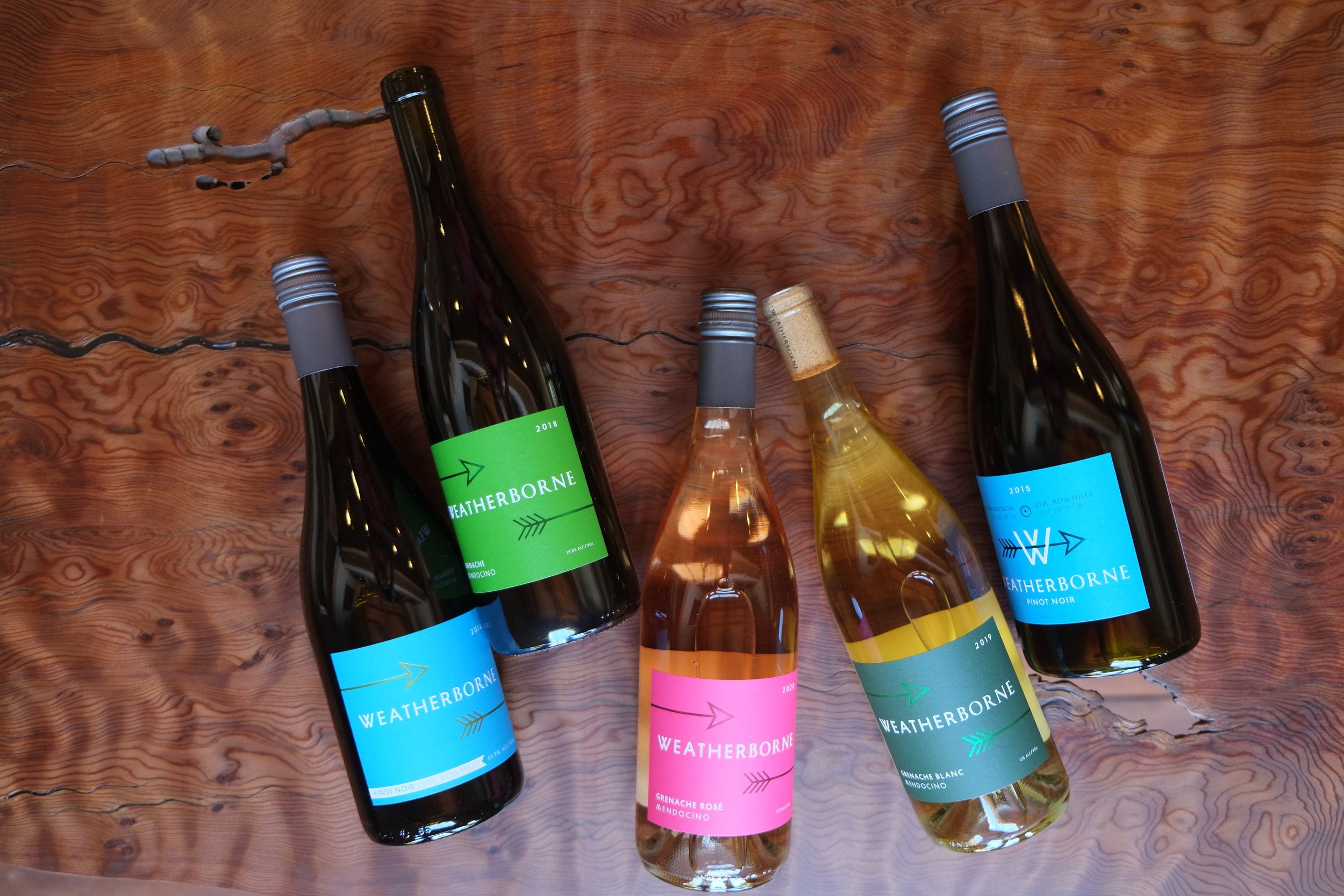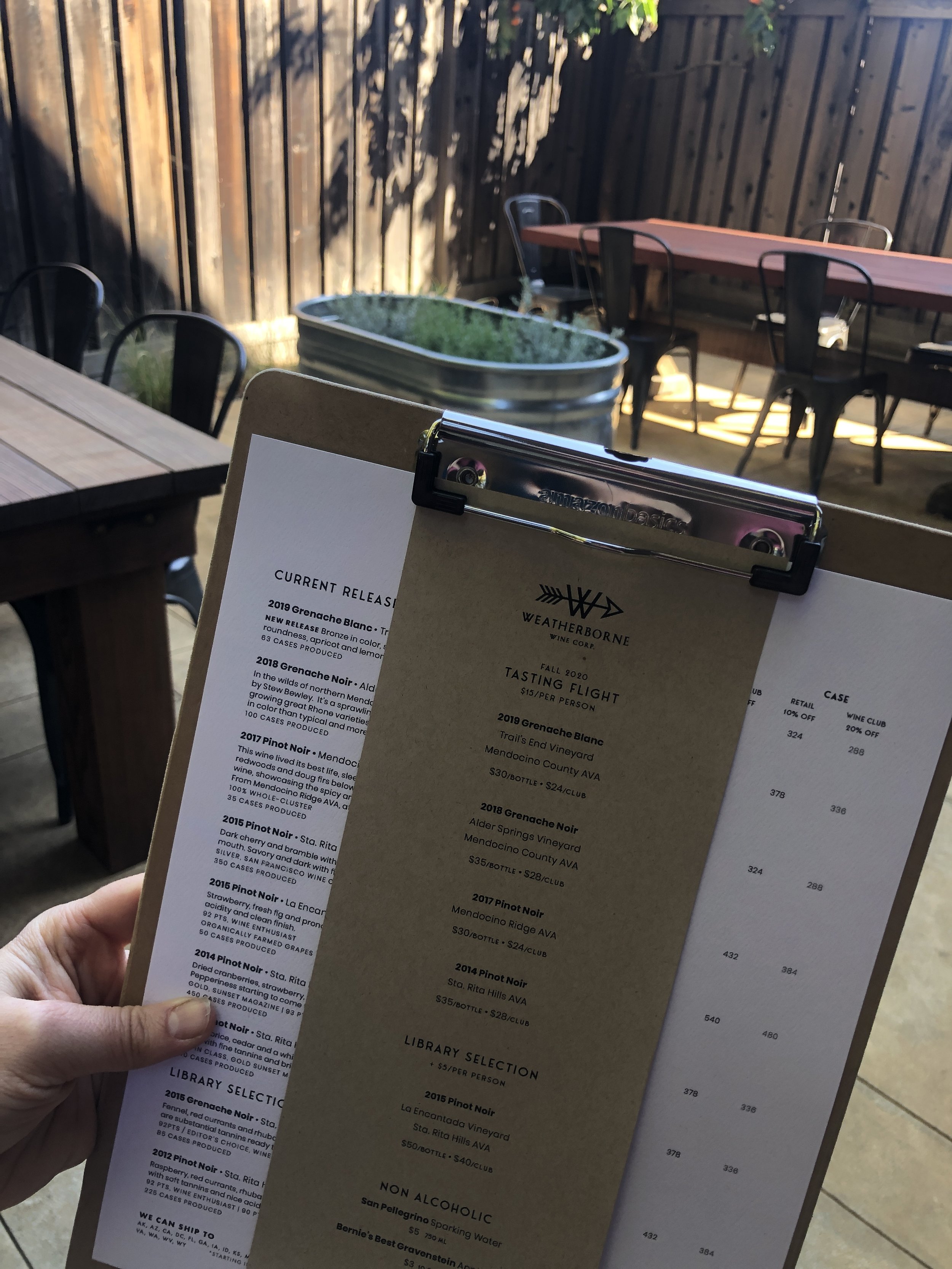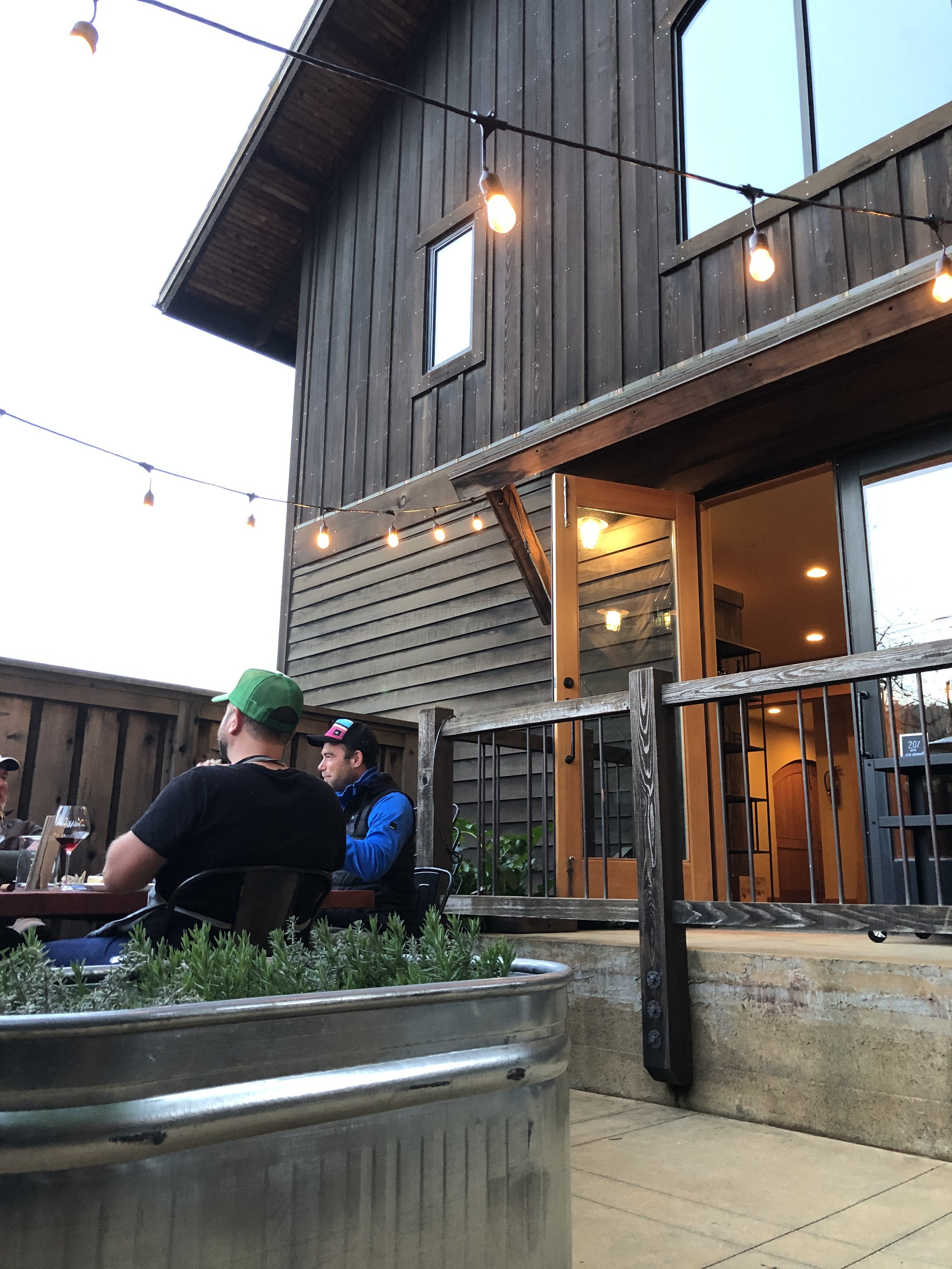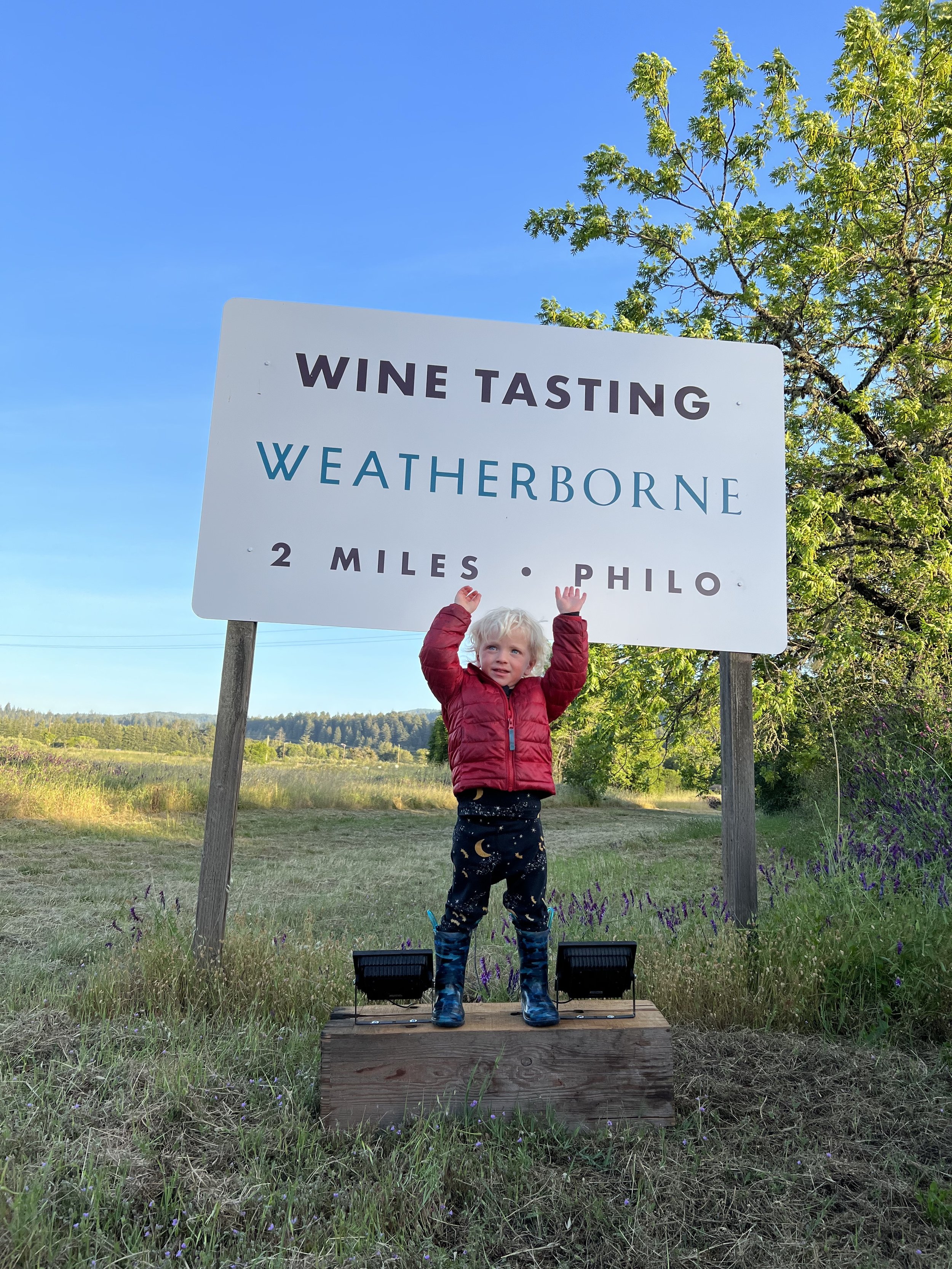Part 2: DTC 4 Life
Economies of Scale
Look, you have lots of options for where you buy wine. Most Americans buy wine from the grocery store and drink it within 48 hours. I can’t compete with the big conglomerates out there in that marketplace. They have fleets of delivery vans, rooms full of marketing teams, scores of salespeople and many more zeroes in the bank account; I have me. So, putting Weatherborne on shelves in Indiana isn’t going to work. I’d be crushed by the big guys’ economies of scale. Very few folks have heard of us. We are working to change that, but that’s just being honest. Even if it was on a shelf, it’d be a challenge to get name recognition, and get the impulse purchase.
I will spill the beans on wine pricing here, so you understand why Direct to Consumer (DTC) is the only option available for a small brand. What follows is a primer on the numbers of the wine business.
Can you spot Weatherborne on this retail shelf?
Support small businesses by buying direct
BTG
There are wholesale sales, to restaurants, wine shops, grocery stores, online retailers, etc. Then there are retail sales to online customers, wine club members and tasting room visitors. A wholesale buyer wants to purchase a wine around 60% of the retail value. So, a $35 bottle of Pinot would sell for $22 a bottle to a wine shop. Realistically, there are price breaks for buying multiple cases. Also, a Buy the Glass (BTG) program moves a lot more wine at an establishment. The caveat is there is only so much a customer will pay for a glass, depending on how fancy the place is, or where it’s located. In California this is around $16 per glass for Pinot. Restaurants make a good margin on alcohol, and way less on the food. Usually, they want to buy a whole bottle for this $16, and then pour 4-5 glasses from the bottle. Pretty good for holding onto a product for a week or two, right?
Wine production in 2014 – Lompoc, CA
A finished bottle of wine
Small production = high expenses
As a small producer I pay more for grapes, glass, labels and corks/screwcaps than a larger winery. I also pay “custom crush” fees multiples higher than a place that owns its own space. My Cost of Goods (COGS) is often double or triple that of a big producer. Basically, they own this segment of the market. I participate only to get my name out.
Alternatively, couldn’t I just make less wine and sell it for a better profit margin? Now you’re thinking. What if I keep all $35 of that sale by pouring it in my tasting room? Even with wine club discounts, I still make more this way. And more importantly, customers are happier and by trying multiple wines I’m ensuring they find something they like enough to take home with them. Everyone in the equation wins: I’m less stressed, make better wine, have the ability to experiment and stabilize cash flow by controlling my own sales. The customer feels appreciated and rewarded for trying something new and often acts as spokesperson for the small brand.
There you have it. You will see a lot of smaller producers move to just direct-to-consumer models as the wine marketplace continues to change. As Baby Boomers age out of their peak purchase power, California wine searches for the next target audience in an every more competitive global world. Where will this take us? Will there be new consumers willing to buy wine in the US? Wish I had a crystal ball, but what fun would that be?
Our goal is to provide an experience beyond the glass
Our business is family-owned, raising the next generation







